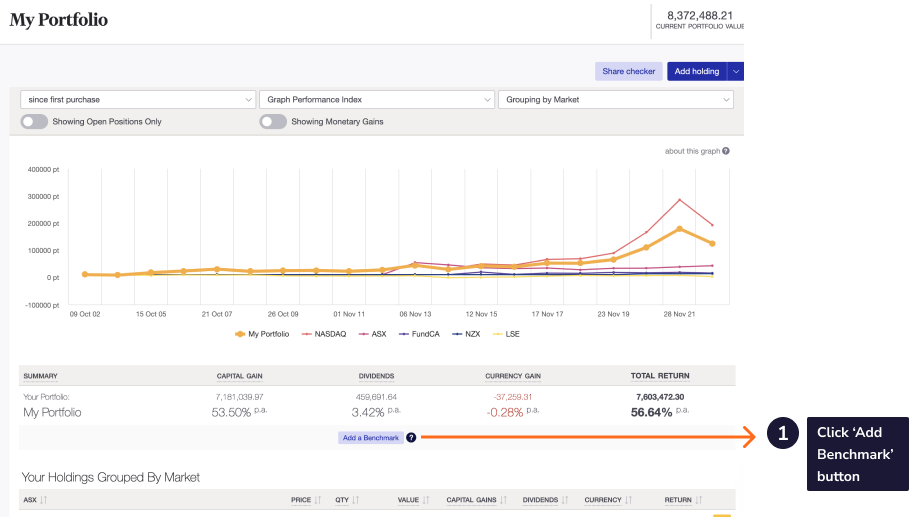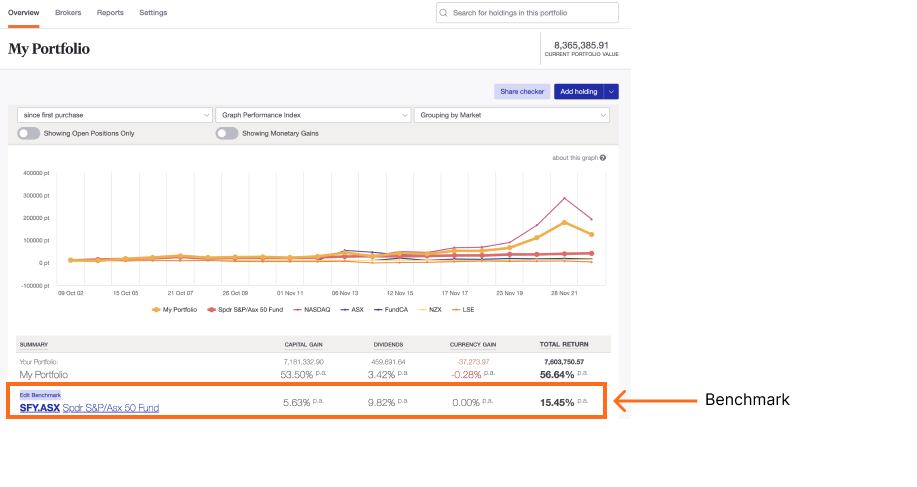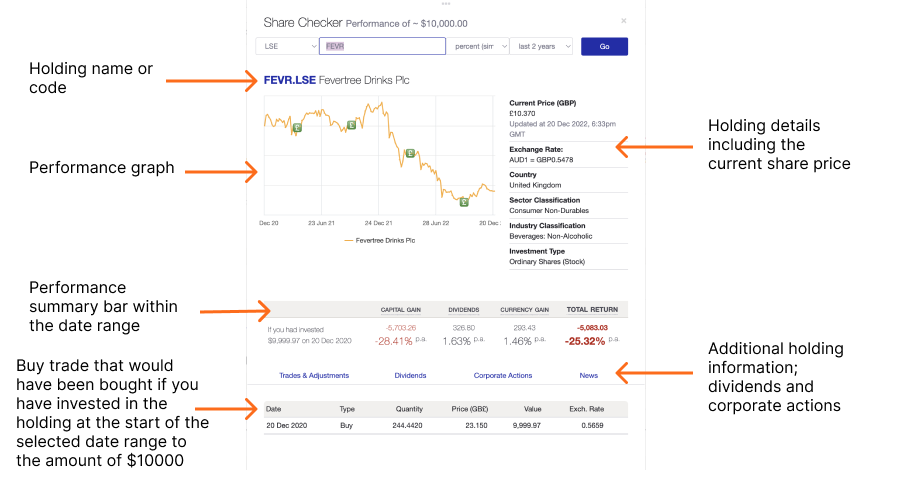How can we help?
Benchmarking portfolios
Note: This feature is only available on Starter,Standard, Premium and Sharesight Business plans. You can upgrade your plan to use this feature.
The Benchmarking feature in Sharesight enables you to select any listed ETF, Unit Trust, Managed Fund or Ordinary Share investment in the Sharesight database to compare against your portfolio.
Benchmarking enables you to be a truly informed investor. By Benchmarking against an index tracking ETF, Unit Trust, Managed Fund or Ordinary Share investment you can see how your portfolio performance compares to an overall market, region, or industry. For example, is your portfolio performance in line with the sectors that you invest in, or have the holdings that you picked enabled you to achieve a superior return?
How the Benchmark works and appears
To accurately compare your portfolio to your chosen Benchmark, Sharesight assumes that you’d invested equal amounts of money in both for the duration of the reporting period.
When the Benchmark is applied it adds an additional row to the summary bar on the Portfolio Overview Page and Individual Holding Page. This allows you to compare the percentage return of your portfolio or holding to the percentage return of the ETF Benchmark.
To visually view the performance of the Benchmark and your portfolio/holding over time select the Performance Index Graph, from the chart dropdown menu.

The performance of your holdings and the Benchmark are indexed so that they can be plotted on the chart using the same Y-axis scales and begin at the same point.
Tracking your mouse along the lines will display a pop-up that shows how the value of each changes. Refer to interpreting the return index graph for more information on how to interpret the return index graph, including specific examples.
Why Benchmark against an ETF instead of market indices?
An ETF is similar to a traditional index in that it tracks a market, sector or country, but an ETF also reflects the cost of investing (management fees) and factors in things like franking credits. Unlike an index, it’s possible to invest in an ETF, this provides a fairer comparison as you are Benchmarking your portfolio against a real alternative investment option.
Setting up a Benchmark on your portfolio:
Embedded content: https://www.youtube.com/watch?v=1ans8-oRivA
1 — On the Portfolio Overview Page, click on the ‘Add a Benchmark’ button.

2 — Either select an listed ETF, Unit Trust, Managed Fund or Ordinary Share investment from the ‘Common Benchmark’ dropdown menu offering pre-selected options of popular index tracking ETFs.
Or
Search for a specific listed ETF, Unit Trust, Managed Fund or Ordinary Share investment by typing in the name or code. Then select from the search results.

The Benchmark will be saved against your portfolio. The Benchmark performance summary will appear beneath the summary bar on the Portfolio Overview Page and Individual Holding Page.

Note: A Benchmark is saved at the portfolio level and will appear on all holdings within the portfolio. It is possible to unselect the Benchmark from the Performance Index Graph, by clicking on the Benchmark key icon beneath the graph.
To view the Benchmark performance in more detail
Click on the Benchmark performance summary bar on either the Portfolio Overview Page or Individual Holding Page.
This will display the [Share Checker](/share-checker/ "Share Checker”) for the Benchmarked ETF, Unit Trust, Managed Fund or Ordinary Share investment, displaying the underlying prices and distributions that are used to calculate the Benchmark percentage return.

Last updated 17th December 2025